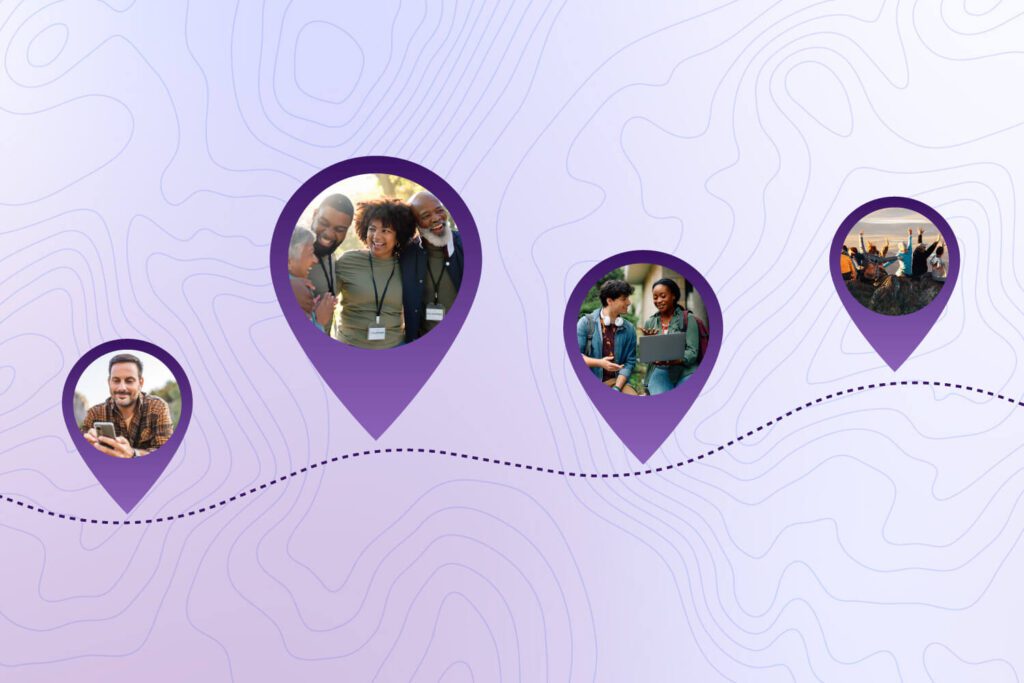The importance of diversity and inclusion for nonprofit organizations

At the start of a new year, nonprofit organizations have to balance evaluating the impacts of their outcomes and operations in the previous year with charting a course for the new year. An undeniable theme persists in shaping both nonprofit outcomes and operations: how nonprofits holistically incorporate diversity, equity, inclusion, and belonging (DEIB) strategies and intentionally center racial equity.
To move the needle forward on racial equity and wellbeing, nonprofits need more than caring and awareness. Across the nonprofit sector, leaders and staff need to implement strategic DEIB initiatives before we can start seeing real change.
Why DEIB initiatives matter for your nonprofit
Across social and private sectors, a key learning outcome in recent years has been the central role that DEIB plays as a lens through which to view everything nonprofits do in service to their communities.
In an article on racial equity advancement, McKinsey & Company reported that “Community institutions shape outcomes for Black residents, and the failure to close systemic gaps in community institutions will further damage economic mobility. Only by actively starting with a race-conscious approach at the foundation, can we begin to stifle the impact of rising inequality and damaging social disparities.”
Nonprofit organizations have a significant influence on their communities. Therefore, focusing on racial equity within your operations and programs is key. From front desk volunteer to the board director, the guiding viewpoint should be to holistically and intentionally foster DEIB as the organizational value that makes your purpose possible.
You’ll need courage and a learning mindset as you continue to innovate practices and services to meet the varied needs and challenges of your community. As you evaluate and launch this year’s programs and operations, incorporate key lessons learned from your own work and sector-wide current best practices.
How DEIB will make your nonprofit stronger
An organization that strengthens and increases DEIB stands to improve:
- Alignment among purpose, services, and a true representation of community.
- Organizational culture, connectedness, and increased staff retention.
- Innovation in programs and services.
- Funding, as funders are increasingly looking at DEIB measures and impact as key funding considerations.
- Economic mobility and greater client wellbeing.
The more DEIB is present within your organization, the stronger the alignment is between your programs, services, and outcomes.
Increasing DEIB is also the right thing to do. Most communities are not homogenous monoliths. Having diverse representation in your teams, boards, and clients ensures your purpose is helping achieve greater, holistic community wellbeing.
Understanding the realities of DEIB for nonprofits
The multifaceted presence and role of DEIB as central across all industries, private, public, and philanthropic, is no longer a secondary concern.
To understand the current reality of DEIB in your own nonprofit and how to improve from there, focus on these three goals:
- Increase DEIB internally. How can you have an increase in equitable impact if your internal teams and board of directors aren’t representative of your community? DEIB disaggregated data tells the story of who isn’t at the table and who is overrepresented. Understand that BIPOC communities are the most negatively impacted by lack of inclusion, and start the process of fostering DEIB at your nonprofit with honest internal dialogue.
- Improve processes to achieve goals and outcomes more equitably. What subgroups within your community and those served by your organization have unique challenges? How does outlining these varied, unique needs across different groups help focus strategies with limited funding?
- Use data to inform your strategies. Centering not only your nonprofit’s organizational data but also the narrative the data tells is a key starting place to launch your DEIB work. Start identifying different data points that will, in time, provide a more accurate picture of your organization’s equity efforts, growth, and outcomes.
Courageous 21st century leadership requires mining your own data and moving beyond the numbers, being committed DEIB advocates through action, and getting started where you are.
Ensuring DEIB conversations happen
DEIB influences every nonprofit organization across the board. With DEIB, organizations of any size can understand the story your data tells and actively implement relevant, practical, and achievable mindsets and practices.
It can be overwhelming to think you have to tackle every element at once while running impactful programs, communications, and fundraising. It helps to break it down into small steps to make the establishment of your internal DEIB efforts manageable as you move forward into the new year and beyond.
It’s time to move beyond diversity statements with actions. From your board of directors to your purpose, programs, and staff, use the tips in this guide to start your year strong through a lens of DEIB.
Ready to Get Started?
Work with Bonterra



